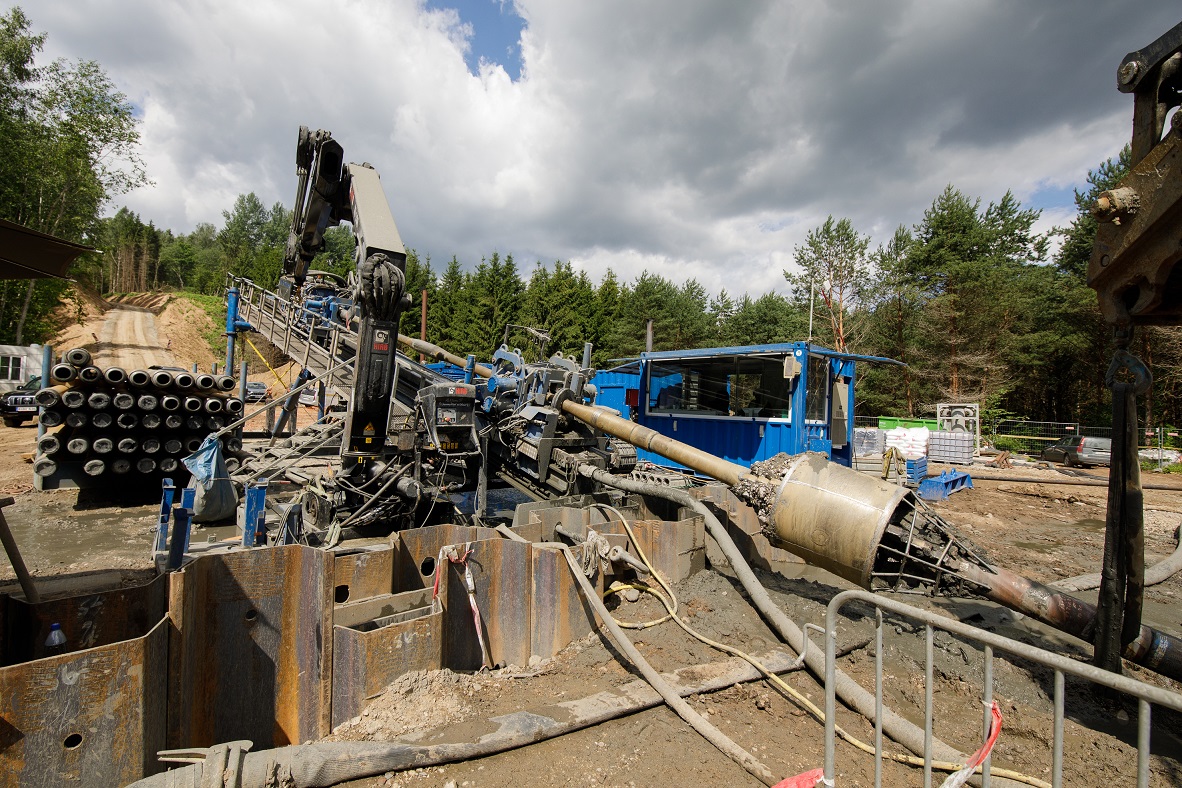The complex horizontal directional drilling (HDD) under the Neris River that is part of the Gas Interconnection Poland–Lithuania (GIPL) project being implemented by Amber Grid has been successfully completed. In order to reduce environmental impact, a section of the gas pipeline has been drawn along the bottom of the river at a depth of 20 metres, and will be connected to the already laid pipeline. Construction of the gas pipeline in Širvintos District and part of Elektrėnai Municipality is nearing completion.
The team of highly qualified specialists from the German company LMR Drilling hired to lay the gas pipeline in the rivers will soon be moving their equipment for the next stage – HDD under the Nemunas, near Punia in Alytus District Municipality. Drilling at this location will last until August.
“Construction of the gas pipeline is progressing faster than planned; we have secured project funding, and implementation of the complex HDD stage allows us to hope that laying the pipeline under Lithuania’s largest river will go just as smoothly,” says Amber Grid CEO Nemunas Biknius.
HDD technology is used to lay pipelines in hard-to-reach or urbanised areas. By drilling the gas pipeline under the Neris – and then under the Nemunas as well – the riverside forest areas will remain intact, the aquatic plants and animals will not be lost, and the natural environment will be preserved without harming it.
The gas interconnection, which will link the Baltic States and Finland to the single EU gas market, will be completed by the end of 2021. Two-thirds of the construction work is planned to be completed this year. Since January, when construction of the gas pipeline began, 117 km of steel pipes have been delivered from Poland, 88 km have been welded, and 27 km of pipeline have been laid in the trench. In Lithuania, the gas interconnection is being laid through nine municipalities: Širvintos, Vilnius District, Elektrėnai, Kaišiadorys, Prienai, Birštonas, Alytus District, Marijampolė and Lazdijai.
In order to check the quality of the pipeline, all of the weld seams undergo radiographic testing and thorough examination before being placed in the trench. Then, once the gas pipeline is buried, a hydraulic test is performed to ensure that the pipeline is properly installed.
The GIPL will make it possible to transport up to 27 TWh of gas per year to the Baltic States, and up to 21 TWh per year to Poland. Once this project is completed, the Baltic gas markets will become part of the single EU gas market.



